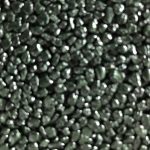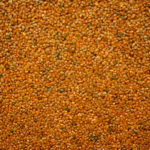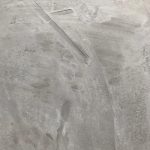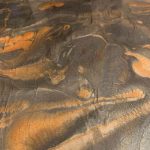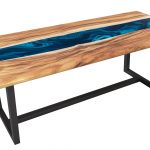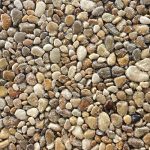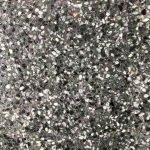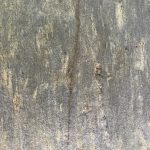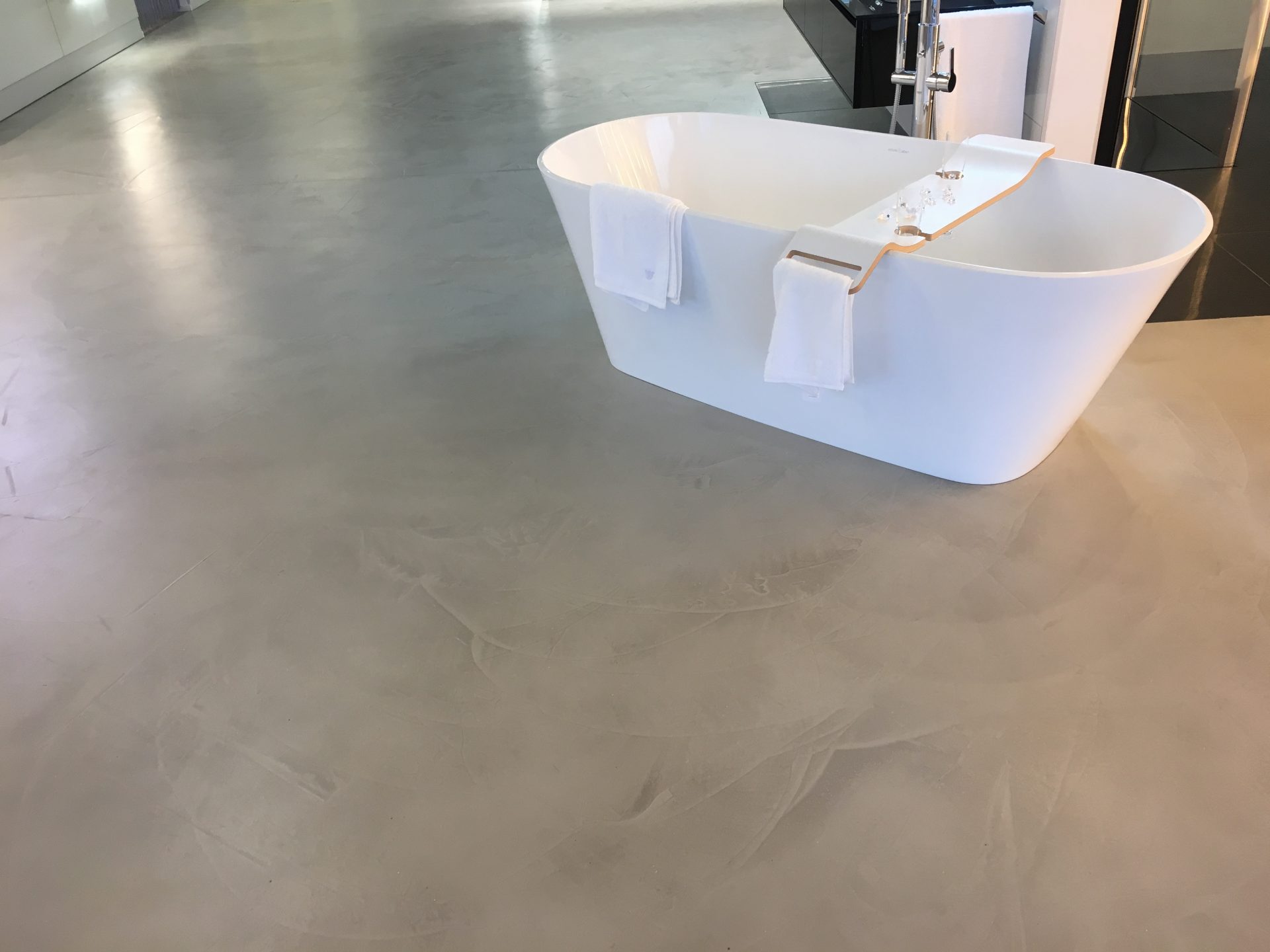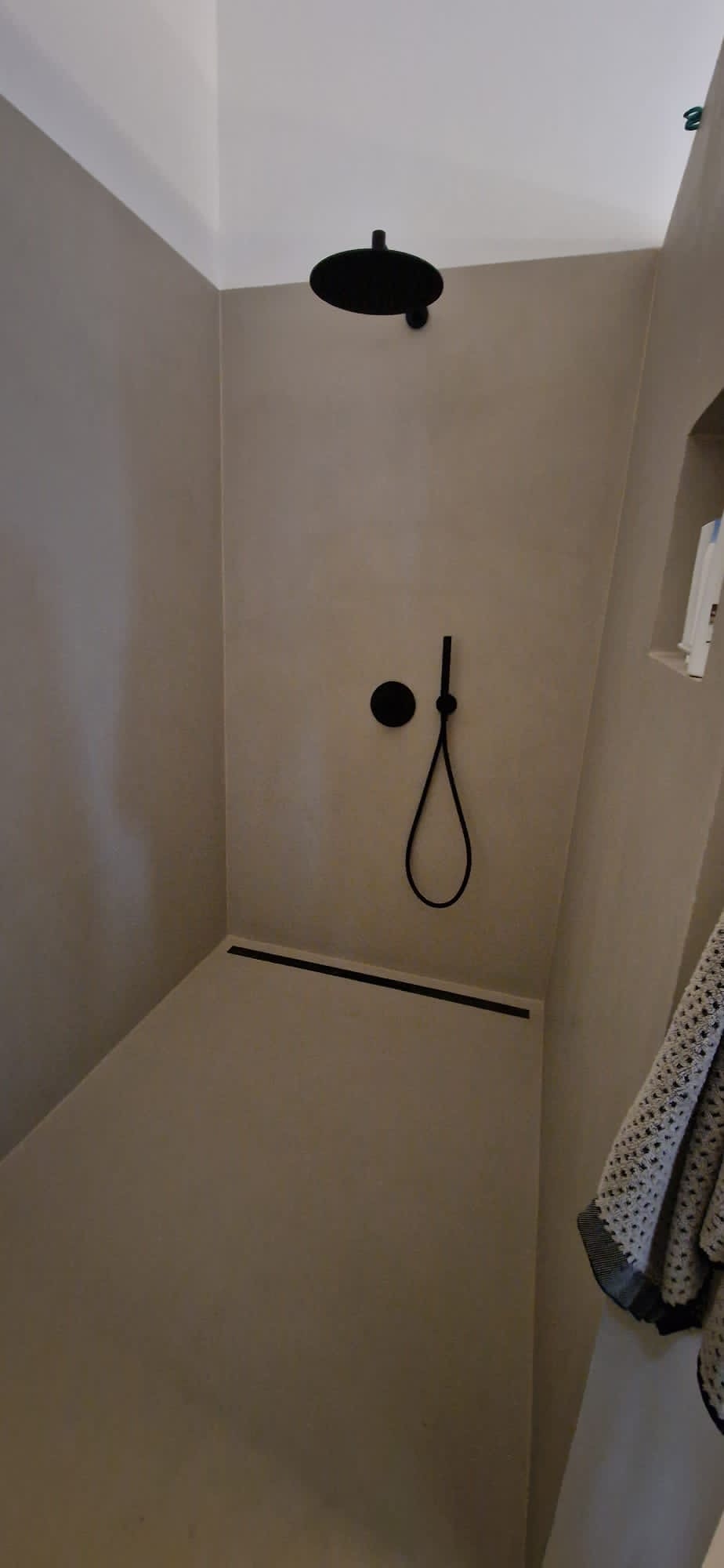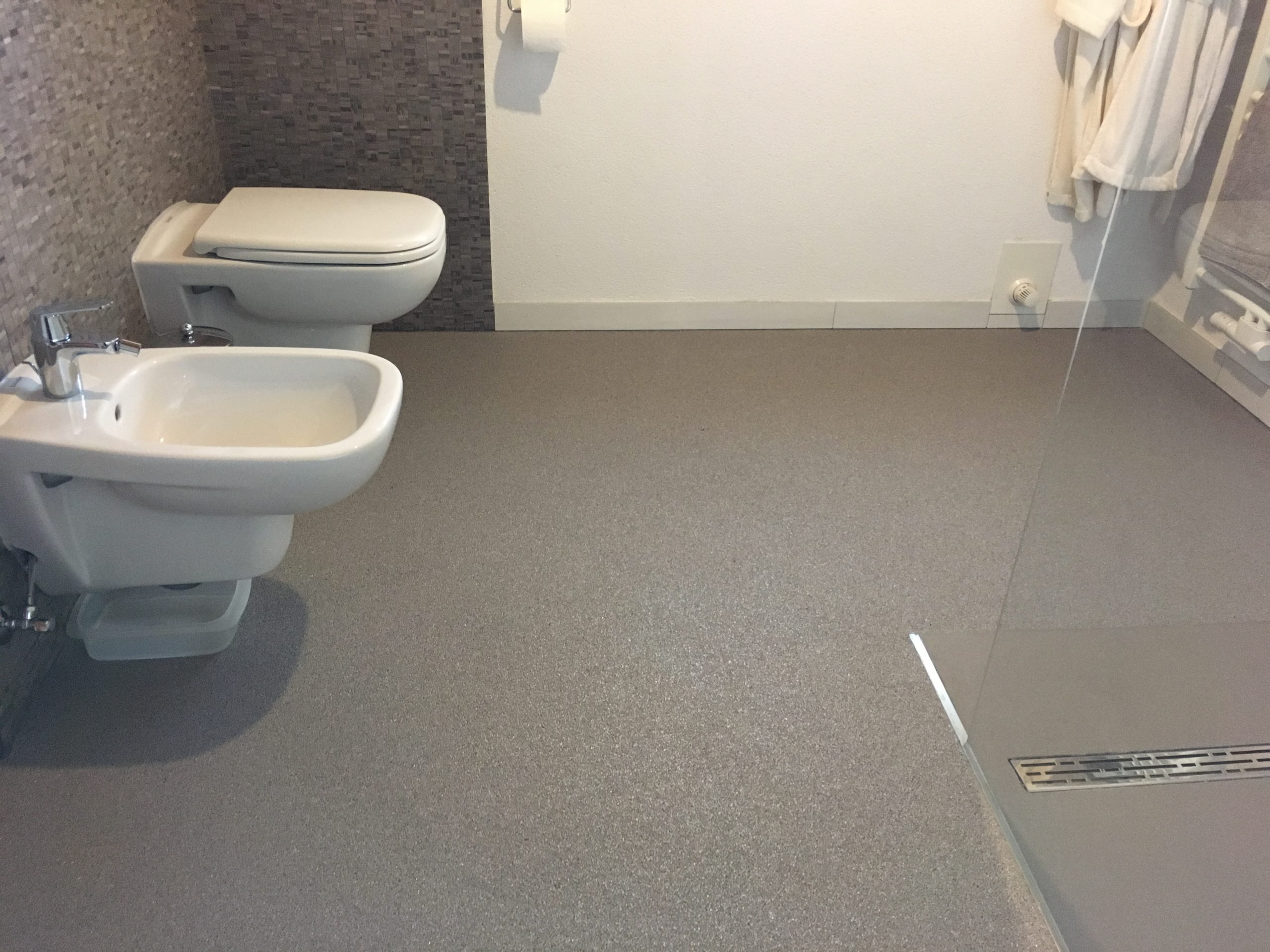A gravel floor is ideal for a robust, modern and low-maintenance floor. A stone carpet can also be laid over tiles as a seamless alternative to natural stone slabs, parquet or carpet.
Contents
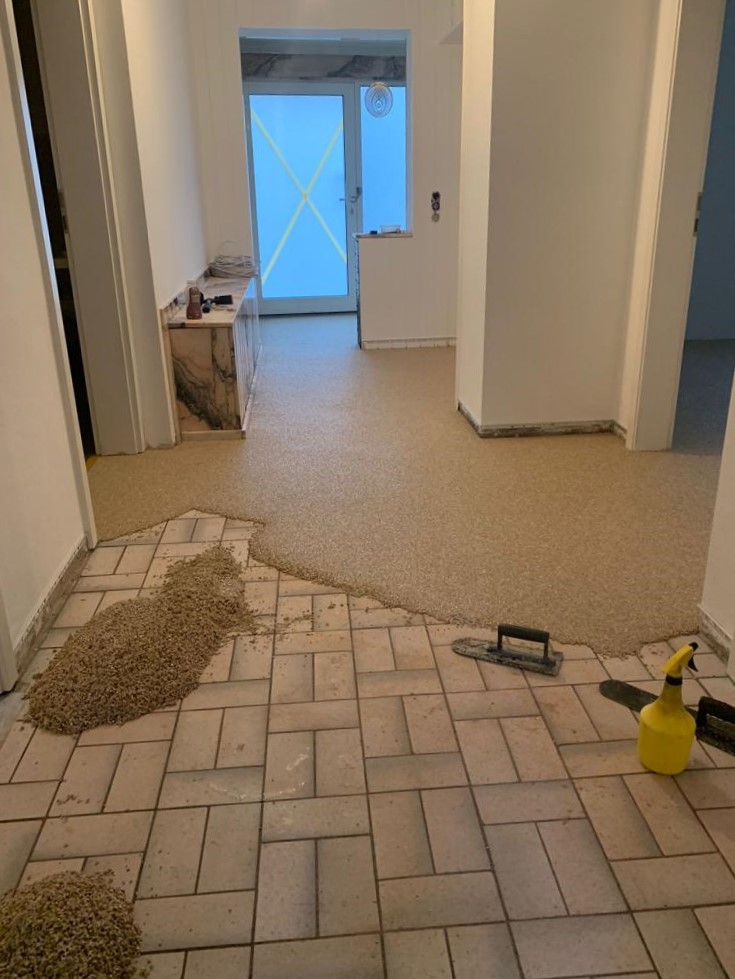
This is why you should opt for a seamless coating These are the hidden dangers of tiled floors
No matter how high quality your tiles were or are: The major weak point is and remains the existing joints in a tiled floor. As is generally known, these become very unsightly after a short period of time and can no longer be cleaned properly. Seamless floors are the better choice, not only for aesthetic but also for hygienic reasons.
Tile joints – especially in the kitchen and bathroom – quickly show signs of heavy wear due to moisture. This is caused by splashing and cleaning water as well as steam from cooking or showering. The joints become porous and allow moisture to enter the area behind the tiles. As this is usually a gradual process, the problem usually remains undetected for a long time.
You only notice that something is wrong when an unpleasant musty smell starts to develop. By then, the damage is usually already well advanced, often resulting in mold growth and damage to the subfloor. In extreme cases, this can be so severe that it affects the fabric of the building and results in building damage.
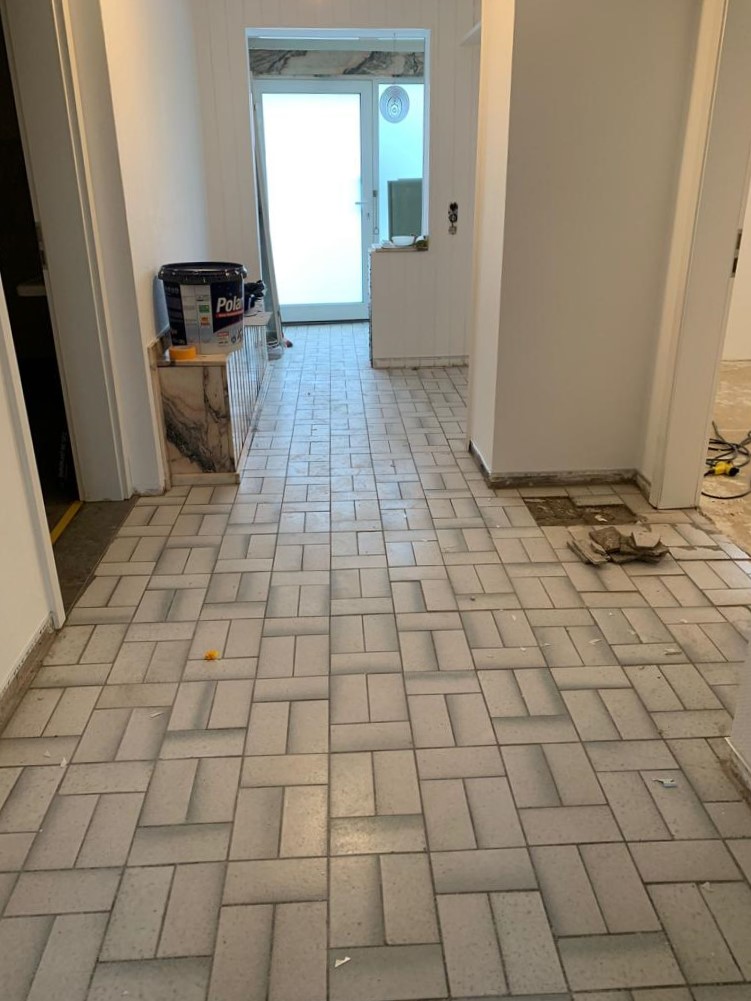
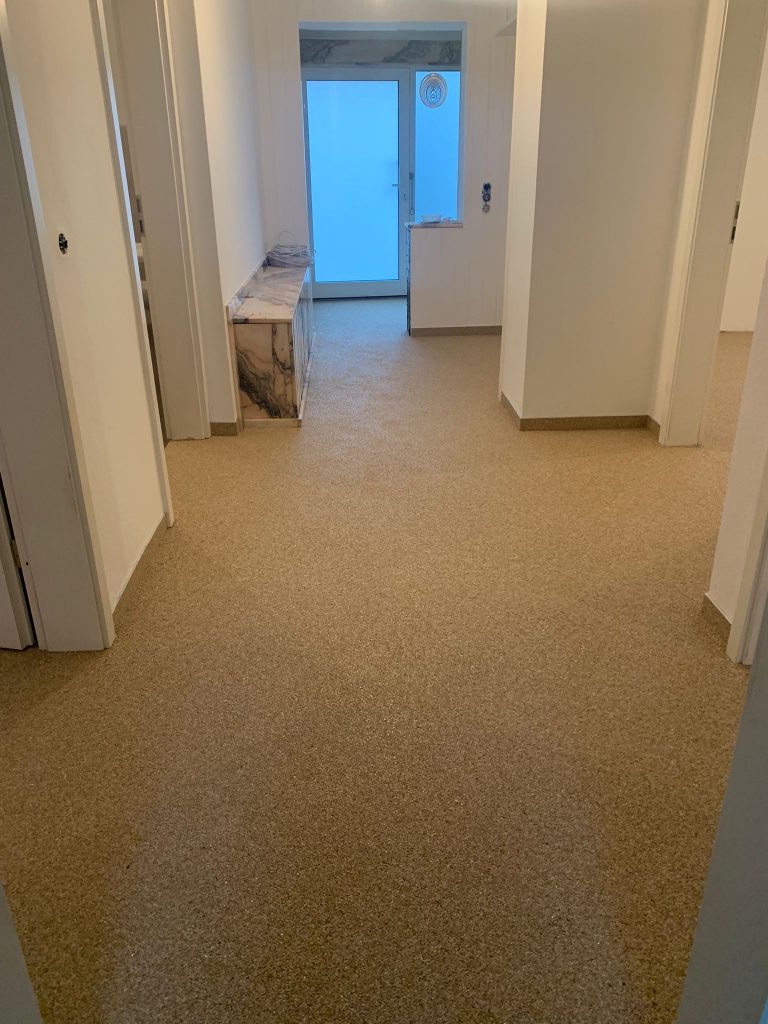
Most substrates are suitable for stone carpets Can stone carpets be laid on tiles?
Suitable substrates for laying stone carpet include screed, concrete, wood, natural stone floors, mastic asphalt, chipboard, Styrodur, terrazzo and tiles. It is important that the substrate is firm and stable.
As with any other substrate, appropriate preparation is also required when laying on tiles. Loose tiles must be fixed or removed before coating. If there are cracks in the screed underneath tiles that have been removed, these must be filled before laying.
The tiles on which the stone carpet is to be laid must be thoroughly degreased before priming. This can also be done by sandblasting. Broken step edges of tiled stairs can be repaired with epoxy resin mortar. A special primer is then applied by the stone carpet installer. This prepares tiled floors in kitchen and bathroom ready for the stone carpet installation.
For tiles in the outdoor area, an additional sealing layer is applied to the surface after priming. This prevents moisture from penetrating through the tile joints into the building structure and causing damage.
Special advantage of laying stone carpets on tiles Special advantage of laying stone carpets on tiles
A stone carpet can be laid directly onto the existing tiling after priming. There is no need to fill the joints when creating a stone carpet on tiles. This is one of the biggest advantages over other trowel floors, where the joints of the tiled floor must first be reworked before installation so that the joint grid is not subsequently painted onto the top floor. This ensures short refurbishment times, an even appearance and …
… for a strong appearance!
Once the substrate has been prepared, the gravel floor is laid.
To combine the new floor with a particularly efficient heating system,
underfloor heating can be milled into the existing tiles before installation.
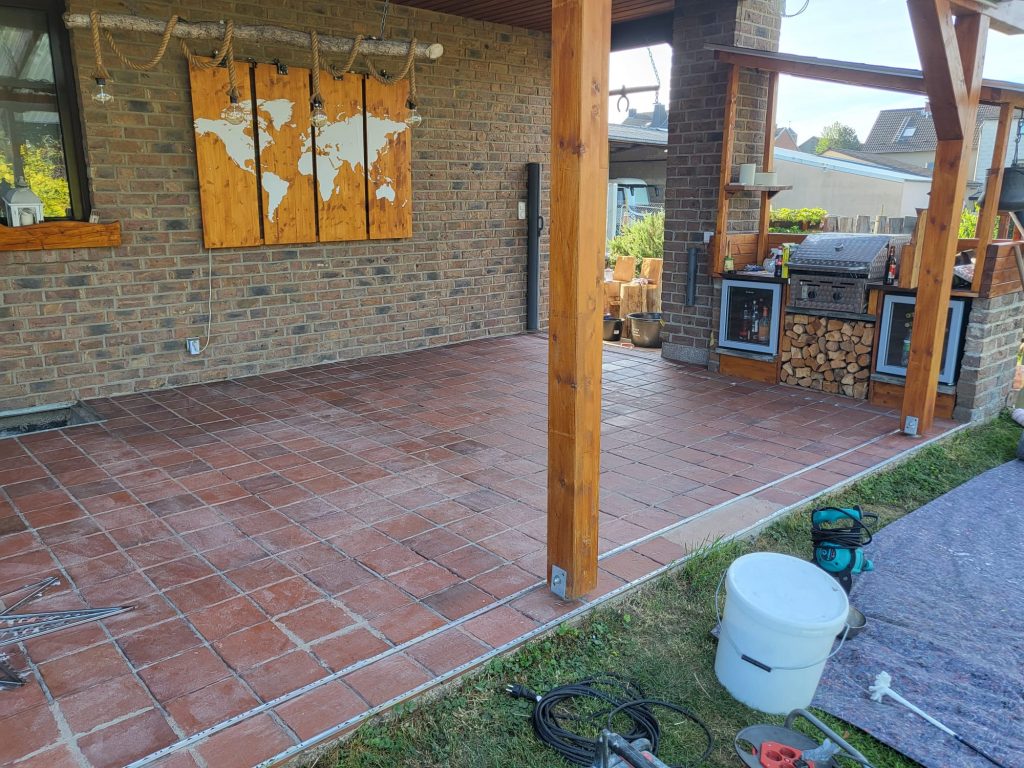
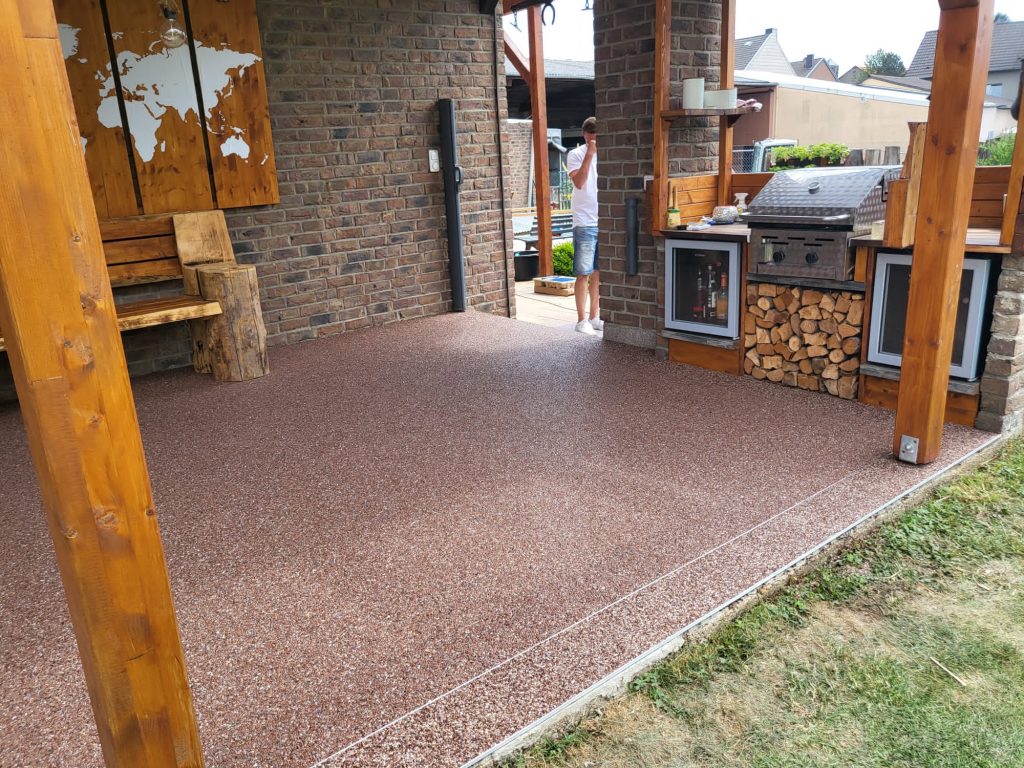
Non-binding cost estimate and advice
Link collection
First and foremost, the area of application determines the pricing. However, the costs depend on many different factors, including
- the type of binder required
-
from the primer
-
the choice of skirting boards, for example, if these are also made of gravel
-
from the labor costs of the professional installer
-
the size of the area to be laid
In outdoor areas, the costs are higher because the substrate needs to be sealed and the marble gravel needs to be laid with a UV-resistant binder.
In most cases,
coloured quartz
or
marble gravel
is used for the production of stone carpets. However, there are considerable differences in quality here, for example in the proportion of dust in the material or in the types of marble used. Mica additives and various precious and semi-precious stones can be added, but this is another cost factor.
Colored quartz is available in the following grain sizes:
-
1–2 mm
-
2–3 mm
- 3–4 mm
Marble gravel is available in the following grain sizes:
-
1–4 mm
-
4–8 mm
- 8–15 mm
Of course, the choice of gravel grain size has an effect on the laying thickness of the gravel floor.
The laying thickness of the floor depends on the gravel grain size and the area of application. Normal gravel with a grain size of 2 – 3 mm can be laid indoors with a thickness of 6 mm.
An installation thickness of 8 mm is used outdoors and on stairs indoors due to the load.
Finally, 10 mm of material is applied to external stairs.
Vertical surfaces such as risers, skirting boards and walls are always laid in 6 mm.
The larger the grain size of the gravel, the higher the installation height of the floor covering. This means that more gravel and additional binder is required per m². The price increases accordingly.
The primer forms the bonding bridge between the building structure and the gravel floor. The material can be applied to almost any substrate, for example tiles, wood, stone, concrete and metal. Different substrates require different preparation steps.
On tiles and metal, for example, a primer is required to give the smooth surface stability during installation.
On porous stone and absorbent screed, the appropriate primer must be used to prevent the binder from being absorbed, which is intended to ensure that the pebbles remain in place.
To coat wooden planks with a gravel floor, the movement of the planks against each other must first be stopped. To do this, the installer first applies a mesh mat to the wooden floor. Once the filler has dried, the gravel floor is applied.
For reasons of hygiene, the stone carpet should be fitted with a pore seal, especially in kitchens and
bathrooms
. It prevents leaked, sticky liquids from penetrating the gravel floor. While it is difficult to remove liquids that have penetrated an open floor, the pore seal enables
effortless cleaning
by wet mopping.
Dogs
, cats and co. feel much more comfortable on the textured surface of a gravel floor than on smooth floor coverings such as tiles or laminate, as they do not slip on stone carpets. However, it is advisable to cover the floor with a pore seal to ensure an easily wipeable surface.
terrace
is the durable alternative to other floor coverings. The system creates a non-slip floor that is not only visually appealing, but also 100% frost-proof and UV-resistant. This means that our
Qubo® quartz gravel
can be used outdoors without any problems. Their special coating gives the quartz pebbles additional protection from the sun’s rays.
marble gravel
, which is also suitable for outdoor use, comes from Italian quarries and is naturally lightfast.
-
High drainage capacity due to open-pored structure
-
Quick drying in sun and wind
-
Easy to clean and self-cleaning
-
100% frostsicher
-
UV-stabil
- Gentle, massage-like walking comfort when walking barefoot
The most important thing when laying gravel floors in outdoor areas is preparing the substrate. This ensures the durability of the finished floor.
On the one hand, this is because a primed subfloor provides significantly increased adhesion for the filled gravel. On the other hand, a sealing layer keeps rainwater away from the building structure, for example, which supports long-term durability.
Options for sealing building structures are
- Sealing using an epoxy resin seal with sealing membrane
- Sealing using a flex sealing slurry
In order to drain rainwater effectively, the floor covering is laid with a gradient of at least 1.5%.
No, in outdoor areas, the stone carpet is always laid as an open system to ensure drainage capacity and thus the drainage of rainwater. This makes them 100% frost-proof and therefore ideal as
pool surrounds
and as a covering for balconies, terraces, entrance areas, outdoor steps and loggias.
We would like to point out that we do not recommend stone carpets in the direct shower area. The reasons for this can be found in the basic structure of the floor and the wet room. Just as the tile adhesive under a tile does not form a completely flat surface without air pockets, pores also remain underneath a sealed stone carpet.
If, after years, a silicone seam leaks and water from a fitting, for example, penetrates between the wall or floor covering and the seal of the building structure, the transparent pore seal reacts with the water and forms white stains. As these occur underneath the seal, they cannot be wiped away or removed by drying.
This is why insurance companies do not classify stone carpets as suitable for wet rooms and do not replace such coatings in the event of damage. We therefore recommend microcement coatings for showers. With these, there is no water-bearing layer between the floor covering and the substrate, so there is no risk of moisture penetration. Due to the many customization options for microcement, it can also be combined with stone carpeting. Just get in touch with us.
stairs
can be easily renovated both indoors and outdoors. If you apply a gravel coating to your old stairs, you will get a new design without having to invest in a new staircase. Renovation is carried out without any chiseling or demolition work. Staircase renovation significantly reduces or even completely eliminates noise. Of course, stone carpeting is also ideal for new staircases and entrance areas.
Yes. A staircase coated with stone carpet already has a slip resistance class of R10 after installation.
Special sealants can be used to increase the slip resistance class to R11 or R12.
Depending on the design of the staircase, the renovation takes 3-5 days. In special cases, installation is also possible within an even shorter time. For a more precise determination of the duration of your construction project ,
simply contact us at
.
All our gravel floors use natural stones as the base material. This is why many people also refer to stone carpeting as
natural stone carpeting
.
The gravel is available natural and colored.
FAQ
Details and facts, key figures and explanations – here you will find answers to frequently asked questions about our Qubo® coating systems. If any details remain unclear, simply contact us at . We will be happy to advise you personally and promptly.

